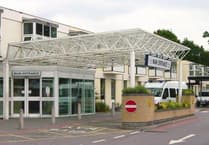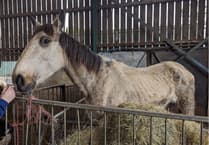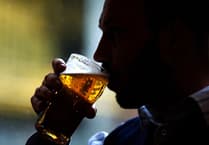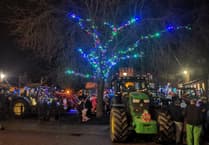CHIDDINGFOLD celebrated one of its most famous former residents with a three-hour peal of bells and the launch of a special exhibition, on Saturday.
For the first time ever in November 1915, the Nobel Prize for Physics was awarded jointly to a father and son, Sir William Bragg and his son Lawrence, for creating the new science of X-ray crystallography that was later used to reveal the structure of DNA.
Professor of physics at the universities of Adelaide, Leeds and London, director of the Royal Institution and president of the Royal Society, it was Sir William who forged close links with the village, when he bought a holiday home there in 1923.
Both Sir William’s major contribution to science and village life are celebrated in a centenary exhibition by Chiddingfold Archive at The Banking House, next to The Crown Inn, which includes showings of a recent documentary film, ‘Driven to Diffraction’.
To mark the show’s opening, villager Ken Lindup arranged for a celebratory peal involving around 500 unique “changes” to be rung at St Mary’s Church, entitled ‘X-Ray Surprise’.
Sir William is buried inside the parish church, where he is also remembered with a commemorative wall plaque,
The centenary celebrations owe a great deal to fellow scientist Dr Jack Salway, who lives in Chiddingfold, and gave a talk on his hero in Hambledon earlier in the month. Many of the exhibits on show were loaned by Hambledon resident Mary Caroe, whose husband Martin was Sir William’s grandson.
The great man is also remembered fondly by Chiddingfold resident Clare Laughton, whose godmother Gwen was his daughter.
A group photo shows Sir William with some of the brilliant scientists who stayed at his Chiddingfold home and he also hit the headlines in the early 1930s, when he devised the ‘Bragg-Paul Pulsator’, a precursor of the iron lung, to assist the breathing of a neighbour who suffered from severe muscular atrophy.
Archive trustee Louise Cartledge said: “Jack Salway did most of the research for the exhibition.
“He’s been interested in him ever since he moved to Chiddingfold 30 years ago, but discovered not many people knew about him, even though he is one of Britain’s best scientists.
“We had a good turnout.
“It was a beautiful day and it was fantastic to have the peal of bells, too.”
The exhibition is open on Saturdays (10am-noon) until the end of January.





Comments
This article has no comments yet. Be the first to leave a comment.